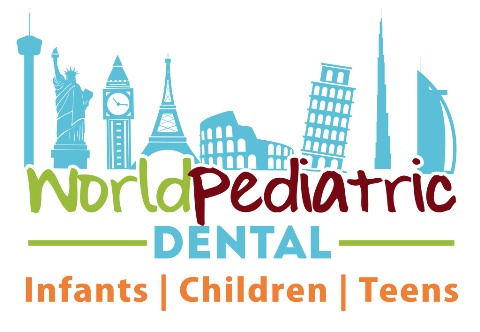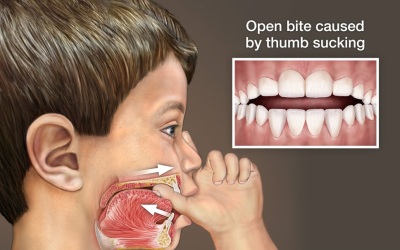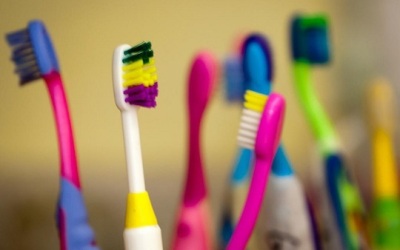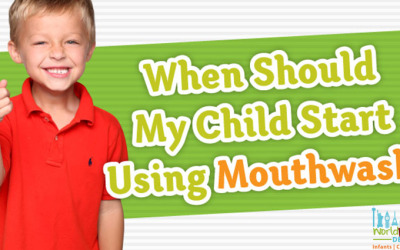Thumb Sucking and Pacifier Use
Like many parents, you may be concerned about your child’s thumb sucking, finger sucking or pacifier use. You may wonder if it is harmful, at what age it should stop or what could happen if your child does not stop. You can rest assured that sucking is one of an infant’s natural reflexes. They begin to suck on their thumbs or other fingers while they are in the womb. Infants and young children may suck on thumbs, other fingers, pacifiers or other objects. It makes them feel secure and happy, and it helps them learn about their world. Placing a thumb or another finger in the mouth provides some children with a sense of security during difficult periods, such as when they are separated from their parents, surrounded by strangers or in an unfamiliar environment. Since thumb sucking is relaxing, it also may help induce sleep. For this reason, young children may suck their thumbs in the evening or at other times when they are tired. Prolonged thumb sucking may cause problems with the proper growth of the mouth and the alignment of teeth. It also can cause changes in the roof of the mouth. Children who rest their thumbs passively in their mouths are less likely to experience difficulty than those who vigorously suck their thumbs. When an active thumb sucker removes his or her thumb from the mouth, a popping sound often is heard. Some aggressive thumb suckers may cause problems with their primary (baby) teeth. BREAKING THE HABIT Pacifiers can affect the teeth in essentially the same way as does... read moreA Great Resource for Parents
The American Academy of Pediatric Dentistry (AAPD) has recently put together a wonderful resource for parents who may have serious questions about their child’s teeth/dentist. We highly recommend you visit this website – as it is a great tool for parents who may be getting ready to make their first dental check-up for their child or a parent who wants to prevent cavities in their child’s teeth. http://www.mychildrensteeth.org/education/ If you look under the tab “Education and Resources for your Family,” you will see great links to frequently asked questions by parents at the pediatric dentist, parent education brochures, and resources even for teens! We like this website because the information is clear, concise, and backed by many scientific studies. Happy... read moreAlarming Children’s Teeth Statistics
DID YOU KNOW that dental disease (cavities and gum disease) is the most common childhood disease – FIVE times more common than asthma? If that’s not surprising enough, here are some more startling statistics: 47.4% of 3rd graders in Virginia have or had a (untreated or treated) cavity experience. Students miss as many as 51 million hours of school each year because of dental problems. Adults miss 164 million hours of work each year because of dental problems. Excellent oral health is considered a very important aspect of maintaining good overall health. Dental disease (cavities and gum disease), is the most common chronic disease of Virginia’s children, despite it being entirely preventable. Are you wondering how to prevent cavities and gum problems for your child? Contact us at 210-888-0700 and we would be more than happy to discuss it with... read moreImpact of Breastfeeding on Dental Health
The experience of breastfeeding is very special for many new moms as they consider that time a valuable bonding experience between the mother and newborn child. Moms who are able to breastfeed also benefit for other reasons: they gain overall health benefits, oral health benefits, and cost-savings benefits. This blog will help explain the many benefits, for both mom and child, of breastfeeding. It is important to remember that the American Academy of Pediatrics (AAP) states that “exclusive breastfeeding, defined as giving an infant only breast milk – no water, no formula, or no other liquids or solid foods – is the norm against which all alternative feeding methods should be compared.” The 2012 AAP policy statement on breastfeeding and the use of human milk documents the many important reductions in health risks for infants and children, mothers, families and society that are attributable to breast-feeding. These advantages include developmental, economic, health, nutritional, immunological, psychological, social and environmental benefits. Why Breastfeeding is Important for Overall Health The policy statement of the AAP Section on Breast-feeding states that breast milk is the only source of nutrition a healthy infant requires for about the first six months of life. Breastmilk provides specific nutritional components for the child – providing immunological, anti-inflammatory, digestive and immune system benefits during the most vulnerable time in their lives. There are many reduced health risks for breastfed children including: Acute Otitis Media (Middle Ear Infections) Gastroenteritis and Diarrhea Lower Respiratory Tract Infections – ie. Pneumonia, respiratory syncytial virus (RSV) Necrotizing Enterocolitis Leukemia Sudden Infant Death Syndrome Asthma Obesity Type 2 Diabetes... read moreThe Advantages of Digital Technology in Pediatric Dentistry
Digital advances in Pediatric Dentistry are amazing. Not only do they provide for patient comfort, they create opportunities for Pediatric Dentists to provide better treatment. Digital X-Rays The cutting-edge technology of digital X-rays, also known as digital radiography, enables the Pediatric Dentist to take crisp X-ray images of the teeth, supporting bone and gums and download them instantaneously into the computer without delay, thus eliminating the need for environmentally-harmful film and chemical development. It also allows dentists to magnify and enhance images to review specific dental issues, and instantly transfer them to a patient’s file or dental specialist such as the child’s orthodontist. Digital X-rays are faster and safer than traditional X-rays, reducing the exposure to radiation by up to 90%. Digital Photography The intra-oral camera allows a patient to see what the dentist sees: their mouth from the inside. These photographs can also be enlarged and enhanced to show detail, creating better means of communication and documentation. Since they are not X-rays, there is no radiation involved. The camera is additionally used for “before” and “after” photos, presentations, enhanced diagnosis, insurance claims, and education or monitoring with parents and patients concerning overall dental health. Digital Panoramic X-Rays Panoramic digital X-rays show the health status of all the teeth in one film. Used primarily to show the upper and lower jaw, the TMJ and the sinus areas, to record existing condition and detect abnormalities of the developing teeth, salivary glands, cysts, displaced teeth follicles, etc. They are especially helpful for children who have orthodontic problems, or those who have medical or behavioral special needs... read moreWhat to do with Trauma?
Active children always seem to be injuring themselves in one way or another. Most of the time, the injury is minor, like a bruise or a scrape. However, sometimes the child needs to see a doctor or a dentist, such as in the case of a broken or loose tooth. Pediatric dentists are especially trained in the management and case of tooth trauma on young teeth. Here is a brief guideline offered by the American Academy of Pediatric Dentistry of the types of trauma children’s teeth can incur, and how you as a parent can help minimize the damage and long term effects. Knocked Out Tooth If a child’s tooth becomes knocked out, the sooner you contact your Pediatric dentist, the better. Quick action can lessen a child’s discomfort, prevent infection, and perhaps save the tooth. Call us even if the injury occurs after regular dental office hours. For baby teeth, rinse the child’s mouth out with water and apply a cold compress to reduce swelling. Do not spend time looking for the tooth, as baby teeth cannot be replanted. For permanent teeth, find the tooth and gentlyrinse it in cold water. DO NOT scrub the tooth or use soap or let it dry out outside the mouth. Handling it only by the crown (don’t touch the root surface), replace the tooth in the socket and have the child hold it there in place with a clean washcloth or gauze as you travel to the dentist. DO NOT place the tooth in water; if you need to carry the tooth, put it into a container with... read moreWhen should your child start using Mouthwash?
Managing your children’s oral health involves a daily reigeme of eating healthy, brushing and flossing to help stop bacteria from building up in the mouth and to stop cavities from forming, which is the ultimate goal. At World Pediatric Dental we strive to do everything we can as your children’s dentist to prevent tooth decay from forming in your child’s mouth. We get asked by parents the right toothbrush, toothpaste and floss to use for their children, but not many ask about mouthwash. (If you have not asked us which toothbrush/toothpaste/floss are best for your child ask us the next time you are in our office! Those three things are still the most important tools to maintaining proper oral hygiene for your kids.) Along with brushing and flossing, mouthwash can help keep the mouth healthy, fresh and free of bacteria, but is mouthwash safe for your kids? If your child is under 6 years of age the American Dental Association recommends that your child wait to use mouthwash. The reason for this is children under 6 might have a problem remembering to only gargle the mouthwash and not swallow it. A good way to see if your child is ready to use mouthwash is have them put water in their mouth, swish it around and then spit. If they are able to do this then they may be ready to use mouthwash. When your child is ready to use mouthwash make sure to get a kid friendly product, one designed specifically for children. The reason for this is because adult mouthwash contains alcohol and is more harmful... read moreDental Care at a Pediatric Dentist
PEDIATRIC DENTISTS HELP MAKE YOUR CHILD FEEL SAFE Taking care of a child’s dental needs is very different than those of an adult. Our pediatric dentists at World Pediatric Dental understand this and with their skill and training are very successful in helping your children both relax and feel comfortable while also offering the best dental care for your kids in San Antonio. If you live in Stone Oak, Dominion, Schertz, Helotes and the surrounding areas of San Antonio, your child can get the dental work they need with several kinds of dental procedures done by our pediatric dentists. In some cases the best way to restore your little one’s smile is with a baby tooth crown. Baby teeth crowns are readily available for placement in a single visit and come in a variety of materials. IF YOUR CHILD NEEDS CROWNS, PEDIATRIC DENTISTS OFFER CHOICES Stainless Steel Crowns When a cavity is not found early, decay can wither away and destroy such a large amount of your child’s tooth that there isn’t enough left to where a filling would work. That is where a stainless steel crown comes in. A stainless steel crown both saves your child’s tooth and also prevents pain and possible infection. Stainless steel crowns also work well in children because they are extremely durable making them the perfect choice. A crown serves to keep the tooth and root connected until the tooth falls out naturally. When a Stainless Steel Crown is Best A tooth that has broken and is too decayed for a filling. To stop a tooth from... read moreFluoride: Nature’s Cavity Fighter
Once cavities form it is time to come in and see your pediatric dentist because cavities that do not get treated can result in significant pain for your child, loss of teeth and even the spread of infection. The great news is you can prevent most cavities from ever forming with good dental care, regular visits to your kids dentist and with fluoride. Throughout this blog post I will go into more detail about how through the use of fluoride you can help maintain strong and healthy teeth for your children. What is fluoride and why is it important? Fluoride is a natural mineral that you can find in all water sources, including the oceans. Fluoride, along with proper dental care with your kids dentist, can prevent cavities in your child’s mouth. What the fluoride does is help to protect the tooth enamel from the acid attacks that are the main cause of cavities. It also helps repair and heal weak enamel BEFORE cavities form! As you can see already fluoride is a very important tool for a proper dental hygiene. So fluoride is good, but what is the best way to get it? We can get fluoride for our teeth in two ways: when we swallow it and when it is put onto the surface of the tooth. To help stop cavities from forming, it is recommended to get a bit from both sources. Just remember that more fluoride DOES NOT mean better! Pediatric Dentists use the word “optimal” to mean “just the right amount.” When you see your pediatric dentist talk it over with him... read moreSeal Out Decay with your Pediatric Dentist
What is a dental sealant? A dental sealant is a special, plastic coating that is applied to the tooth to protect it from decay. When teeth are treated with sealants, they are less likely to get cavities. Sealants can be applied quickly and painlessly. This is one of the main reasons your pediatric dentist recommends sealants for your child. What causes tooth decay? Teeth are covered with a sticky film of bacteria called plaque. This bacteria changes sugar into harmful acids that attack the hard layer on teeth called enamel. Over time, these attacks may break down the enamel and cause tooth decay, or cavities. Tooth decay often occurs on the chewing surfaces of the back teeth. These surfaces have pits and grooves that trap plaque and bits of food. The pits and grooves are hard to keep clean because bristles cannot reach into them. That is how decay starts in the pits and grooves and a cavity forms. Even a toothbrush bristle is too big to to reach inside a groove in the tooth (magnified). How do sealants work? A dental sealant is a plastic material applied to the chewing surfaces of the back teeth. The resin flows into the pits and grooves in the teeth. The sealants form a barrier, protecting enamel by sealing out food and plaque. How are sealants applied? It takes only a few minutes to seal each tooth. The chewing surfaces are cleaned to make it easier for the sealant to stick to the tooth. Then the sealant is applied to the chewing surface, where it... read moreWorld Pediatric Dental
18707 Hardy Oak Blvd San Antonio, Texas, 78258 USA
info@worldpediatricdental.com • 210-888-0700
18707 Hardy Oak Blvd San Antonio, Texas, 78258 USA
info@worldpediatricdental.com • 210-888-0700









